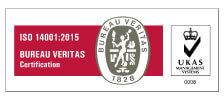The importance of mental health at work
It’s a fact that more and more employers are beginning to understand the importance of managing mental health in the workplace.
After all, at any moment one in six people in the UK and Ireland are suffering at work with symptoms of a mental health condition.
That’s one in six people. And those are just the numbers we know about.
The consequences of poor mental health awareness at work means countless more people could be struggling. This could include long term mental health problems with your own employees.
Worse yet, countless could be going unnoticed. That’s where we can help.
The best employers take a proactive approach to their employee’s wellbeing.
They understand one simple truth. A happier workforce is a more productive, enthusiastic and loyal workforce.
But how do they make this happen?
What is a Employee Wellbeing Programme?
Wellbeing programs are integral for your staff for encouraging and promoting improved mental health and overall wellbeing
The purpose of an Employee Wellbeing Programs is to boost productivity and reduce staff absences. It provides people with the tools needed to get mentally healthy. It raises awareness among peers. It even prepares for returning to work more quickly.
The number one choice for employers in the UK is the Employee Assistance Programme (EAP) from Health Assured.
Our 24/7, 365 helplines reduce stress, anxiety and depression; and we have proof.
What's included with an EAP?
- 24/7, 365 access to market-leading mental health This includes financial & legal information and more
- Access to excellent EAP counselling services
- There's our range of workshops, accredited Mental Health First Aid training and more
- Our Wisdom app provides comprehensive health and wellbeing support in the palm of your hand
Why is wellbeing so important in your organisation?
It helps when you’re open about the importance of mental health at work. You help your employees' emotional, psychological and social wellbeing through five clear benefits:
- Employees take fewer days off with mental health symptoms. And, if they are unwell, they stay off work as they should
- You enhance your overall business reputation providing a duty of care to your employees
- Work becomes a happier place to be, which helps you attract the best talent
- Employees become much more motivated and their work output improves
- Your best people stay loyal to both you and your business, reducing staff turnover
Let’s talk about how Health Assured’s EAP can support you and your business. Arrange a call back from a wellbeing expert today.
Talk to an expert or call us 0800 206 2532




















